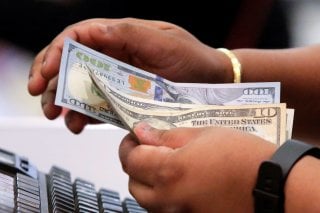$1,400 Stimulus Checks: Should You Spend the Cash or Save It?
U.S. consumers are putting away 42 cents of every dollar received from the third round of stimulus checks that were sent out last month. Moreover, less than 25 percent of the money is being spent and the remainder is being tapped into to settle outstanding debts.
According to their latest update, the Internal Revenue Service and U.S. Treasury already have disbursed one hundred fifty-six million coronavirus stimulus checks worth approximately $372 billion under the $1.9 trillion American Rescue Plan.
But a new poll conducted by the Federal Reserve Bank of New York is suggesting that many of these recipients of the stimulus funds aren’t as cash-strapped as believed to be.
The survey has revealed that U.S. consumers are putting away 42 cents of every dollar received from the third round of stimulus checks that were sent out last month. Moreover, less than 25 percent of the money is being spent and the remainder is being tapped into to settle outstanding debts.
In contrast, for the first two rounds of the stimulus checks, households spent a greater amount of the money on daily living expenses, the poll further showed.
The researchers added that it is certainly possible some consumers are saving more of the stimulus funds because of limits on the activities they can do during the ongoing pandemic. These consumers may spend more of those savings as the economy gradually reopens.
In another recent research conducted by bill pay service doxo, there was a 30 percent month-over-month rise in the number of payments made to pay household bills from March 17 to March 21. During that same week, the total amount paid was found to be 37 percent higher compared to the same period in February.
In all, the Seattle-based company calculated that roughly 62 percent of stimulus checks are being spent on bills, such as those to utility companies and mobile phone carriers, with a large portion of that focused on paying off outstanding credit card debt. It also revealed that during the week of March 17, there was a 29 percent increase in credit card payments and a 72 percent surge in the amount paid compared to the same period in February.
Back in October, doxo discovered that 42 percent of Americans skipped at least one bill because of the economic effects of the ongoing coronavirus pandemic. Moreover, 30 percent tacked on credit card debt.
“Our data shows that more than half of all Americans have seen a reduction in income as a result of the COVID-19 crisis. It is therefore no surprise that many have also struggled to pay their bills over the last seven months since the pandemic started,” Jim Kreyenhagen, vice president of Marketing and Consumer Services at doxo, said in a statement.
According to the details of the American Rescue Plan, individuals who earn as much as $75,000 in adjusted gross income (AGI), or couples making $150,000—in addition to their children or adult dependents—qualify for the full $1,400 per individual.
Moreover, single parents with at least one dependent who earn $112,500 or less also get the full amount. Families in which some members have different citizenship and immigration classifications are eligible for a payment, if at least one person has a Social Security number. The payments, however, phase out much more quickly than in previous rounds—an individual with an income of $80,000, or a couple with $160,000, will not be receiving any check.
Ethen Kim Lieser is a Minneapolis-based Science and Tech Editor who has held posts at Google, The Korea Herald, Lincoln Journal Star, AsianWeek, and Arirang TV. Follow or contact him on LinkedIn.

